Imagine stepping into your backyard and being greeted by a serene oasis that combines beauty, comfort, and functionality—a garden canopy can make this dream a reality! Whether you’re a novice just starting your outdoor journey or a seasoned homeowner looking to elevate your space, our “14 Garden Canopy Ideas for Your Next Project” offers the inspiration and insights you need. These ideas will not only enhance the aesthetics of your garden but also provide practical benefits like shade, privacy, and a cozy retreat for family gatherings.
In exploring these canopy ideas, you’ll discover how simple adjustments can have a transformative impact, making your outdoor area more inviting and enjoyable. From classic pergolas to modern sail shades, each suggestion is designed to spark creativity and confidence, ensuring you can craft a space that reflects your unique style. With our guide, you’ll be well-equipped to turn your garden into a personal haven that brings endless joy and satisfaction.
Incorporate Retractable Canopy Systems
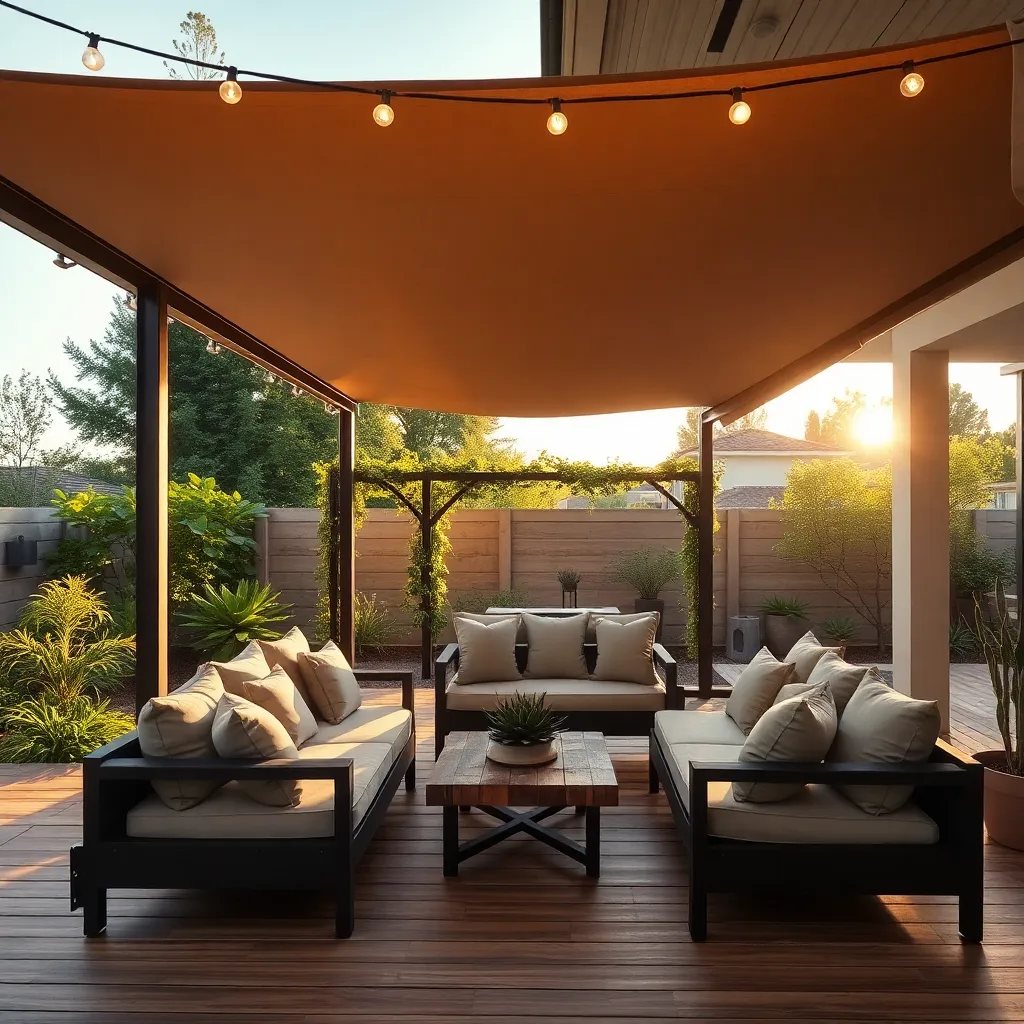
Incorporating retractable canopy systems into your garden is a versatile solution to provide shade and protection from the elements. Retractable canopies are perfect for creating flexible outdoor spaces that adjust to weather conditions, making them ideal for patios or decks. For beginners, consider starting with a simple motorized retractable awning, which can be easily installed and operated with remote controls. Choose durable materials like acrylic fabric or waterproof polyester that resist fading and mildew for long-lasting use.
For those seeking advanced options, integrating automated systems with sensors that respond to weather changes can enhance convenience and efficiency. Advanced designs may include solar panels to power the system, offering a sustainable solution. Ensure the structure is sturdy by using aluminum or powder-coated steel frames, which provide resilience against strong winds. Remember to measure your area precisely, allowing for adequate overhang to maximize coverage and usability. This thoughtful approach ensures your retractable canopy system is both functional and stylish.
Use Weather-Resistant Canopy Fabrics
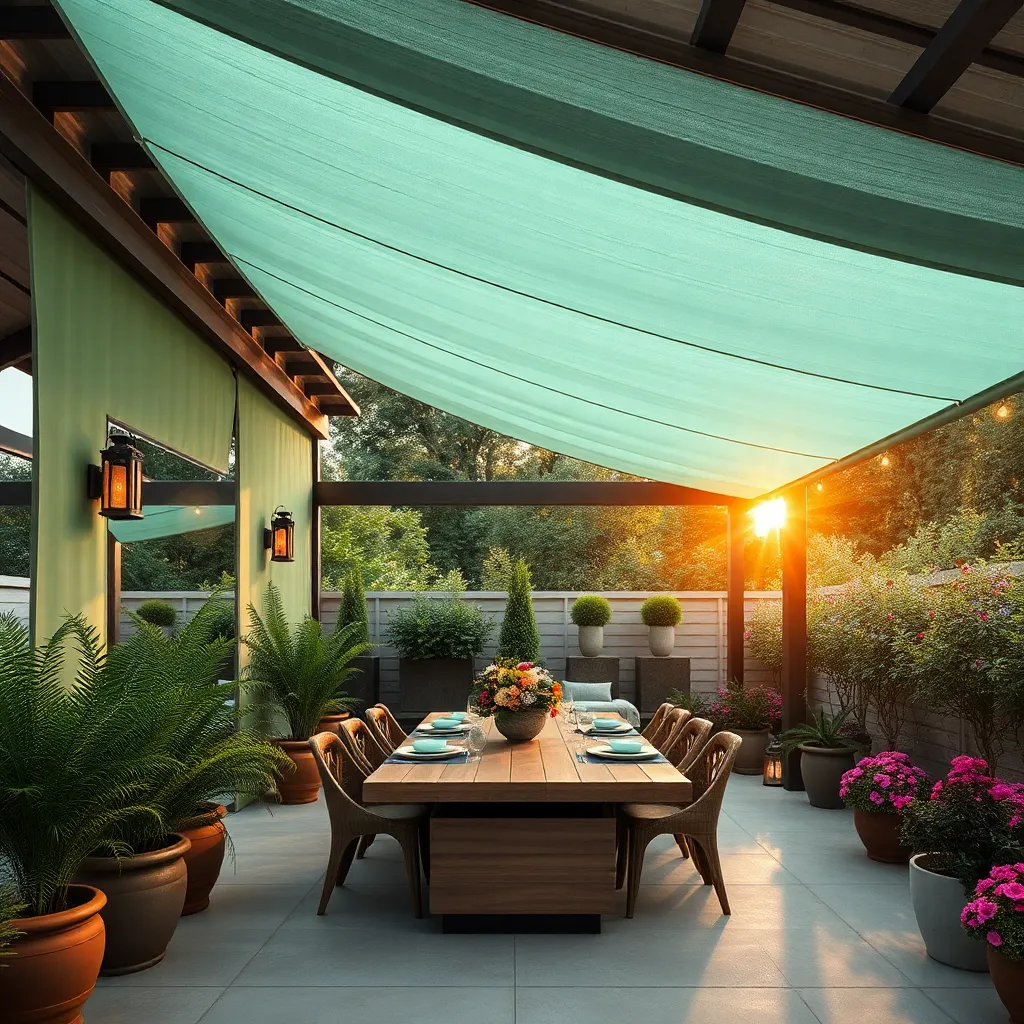
Opting for weather-resistant canopy fabrics is essential to ensure longevity and durability for your garden shelter. Look for materials like polyester or acrylic with UV-resistant coatings to protect against sun damage and fading. These fabrics not only withstand harsh weather conditions but also offer a wide range of color choices to match your garden aesthetic. For those in rainy climates, consider waterproof options to prevent water damage and mold growth.
For a more advanced setup, consider integrating tensioned fabric structures that can withstand wind and heavy rain. Installing these requires precise measurements and durable hardware, such as stainless steel fittings and tension cables. Beginners can start with pre-cut fabric kits that include everything needed for installation. To enhance versatility, use modular designs that allow you to add or remove sections as needed, adapting to seasonal changes or special occasions.
Add Climbing Plants for Shade
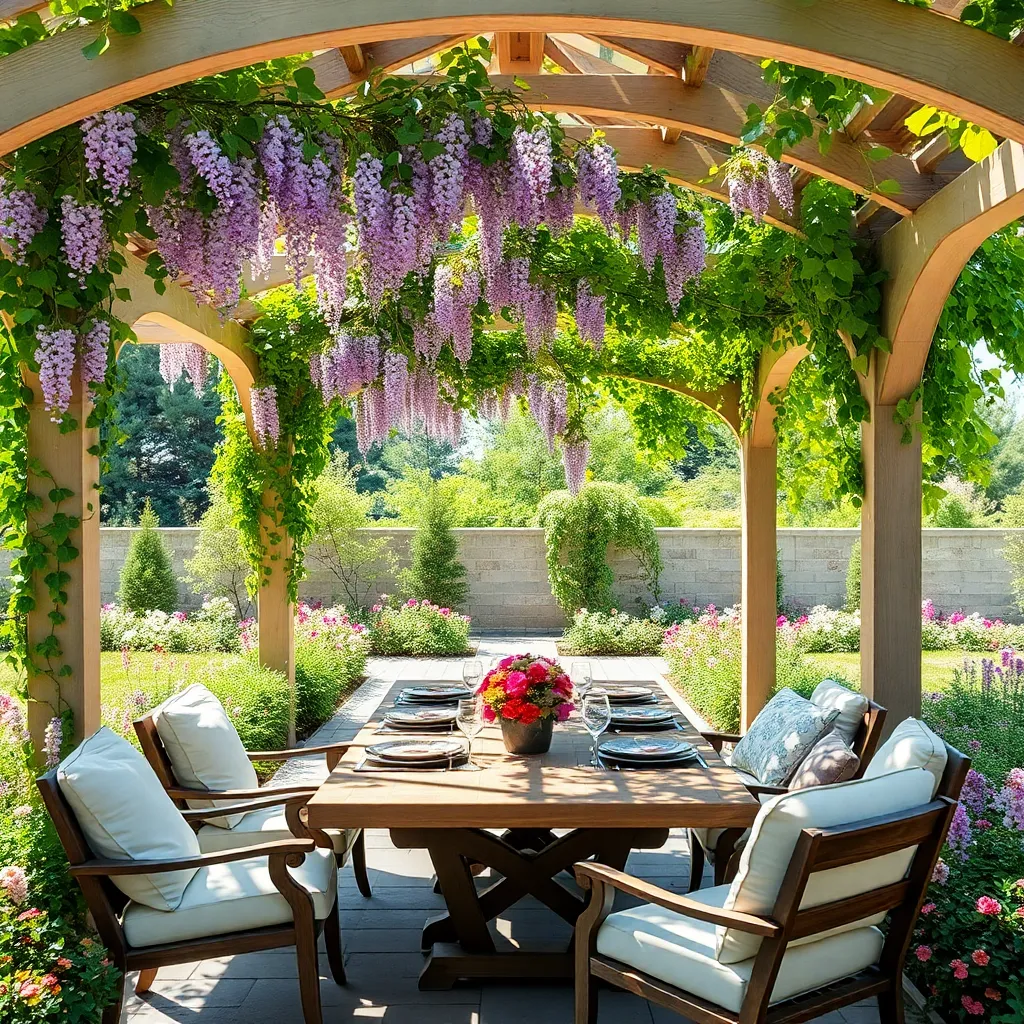
Incorporating climbing plants into your garden canopy design is an excellent way to add natural shade and beauty. Start by selecting fast-growing climbers like **wisteria**, **honeysuckle**, or **clematis**—these are perfect for creating lush coverage. Ensure you provide sturdy supports; options like metal trellises or robust wooden frames are ideal. For beginners, a simple lattice structure can work wonders, and remember to space your plants about 1 to 2 feet apart to allow ample room for growth.
To enhance the aesthetic and functionality of your canopy, consider mixing different species for varied textures and seasonal blooms. **Advanced gardeners** might experiment with training techniques, such as espalier, to guide plants along specific pathways. Regular pruning is essential to maintain shape and health, and a **drip irrigation system** can keep your climbers well-watered without overdoing it. With the right support and care, your climbing plants will provide an inviting, shaded retreat in your garden.
Create a Layered Canopy Effect
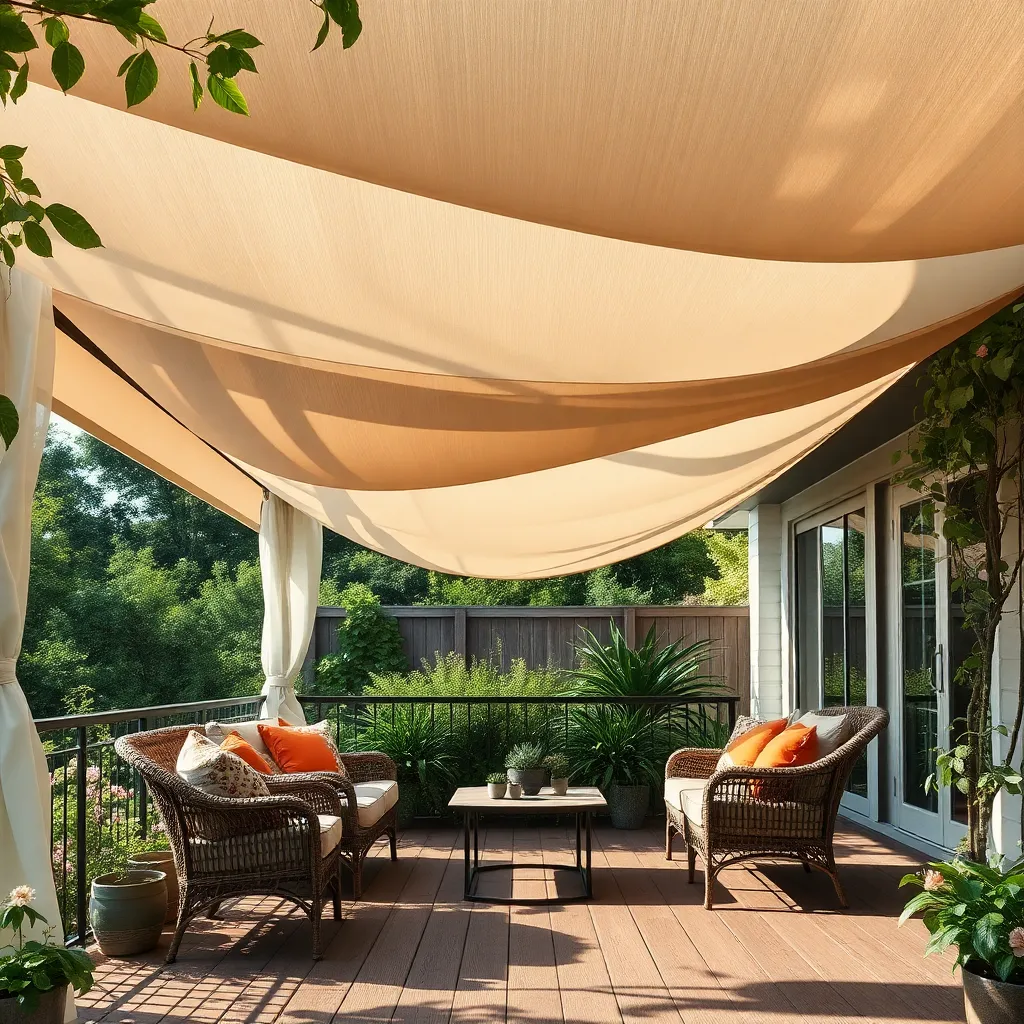
To create a layered canopy effect in your garden, consider using a combination of structures at varying heights. Start with a base layer using pergolas or arbors, which provide a solid framework for your canopy. Opt for materials like cedar or treated pine for durability and natural resistance to the elements. These structures will act as the backbone, offering a stable platform for the layers above.
Above your base structure, add lightweight fabrics or shade sails to introduce an airy, multi-dimensional feel. Choose UV-resistant materials to ensure longevity and maintain the vibrancy of your chosen colors. For an advanced touch, integrate retractable options that allow you to adjust the shade throughout the day. This layered approach not only enhances your garden’s aesthetics but also provides customizable protection from the sun.
Install Solar-Powered Canopy Lights
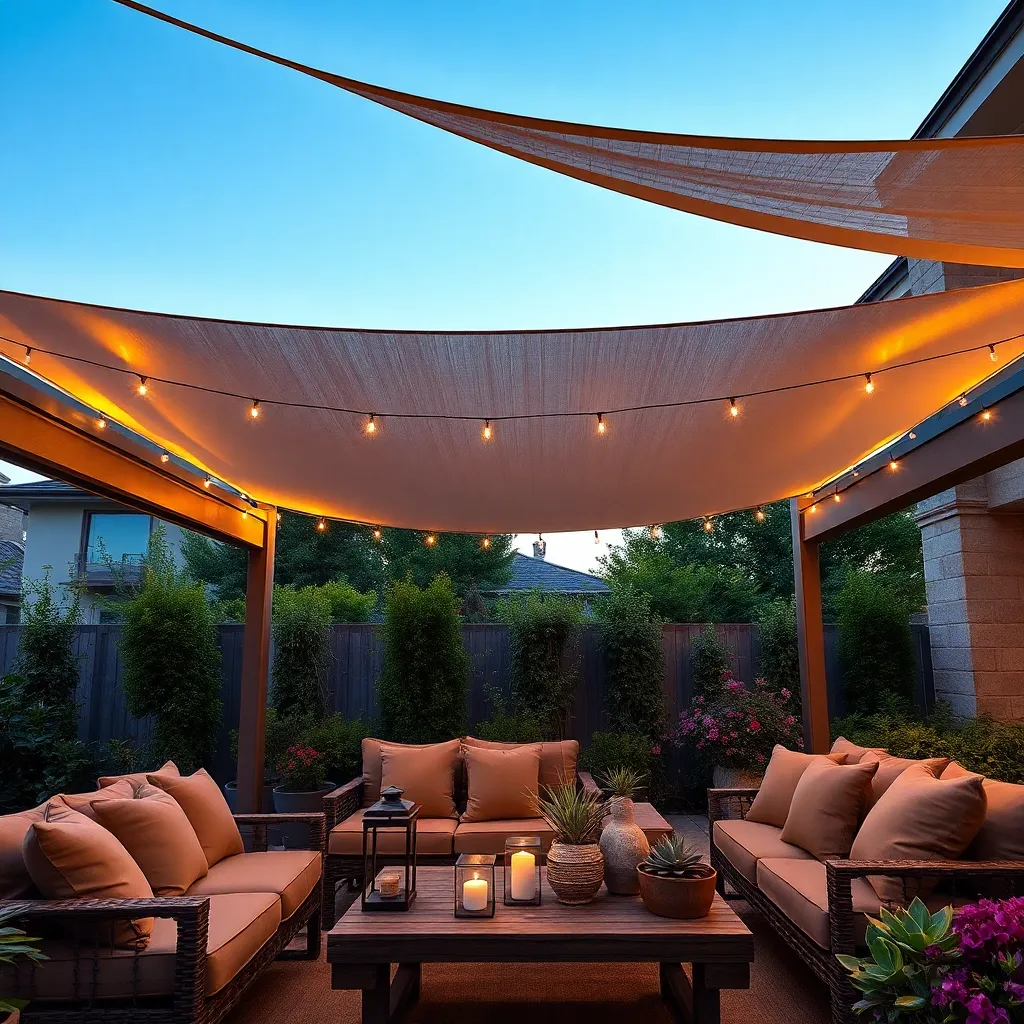
Adding solar-powered canopy lights to your garden shelter is a sustainable way to enhance ambiance and functionality. These lights are easy to install and require minimal maintenance, making them perfect for beginners. Start by selecting durable, weather-resistant lights designed for outdoor use. Ensure your canopy is positioned to receive ample sunlight during the day, optimizing energy collection for nighttime illumination.
For a seamless design, consider integrating your lights with the structure of your canopy. Attach the solar panels to the top of the structure where they can absorb maximum sunlight. Use zip ties or hooks to secure the lights along the edges or across the canopy ceiling. Advanced gardeners might explore programmable options to schedule lighting or choose motion-sensor features for added security. With these lights, your garden becomes a welcoming retreat, day or night.
Design With Adjustable Canopy Angles
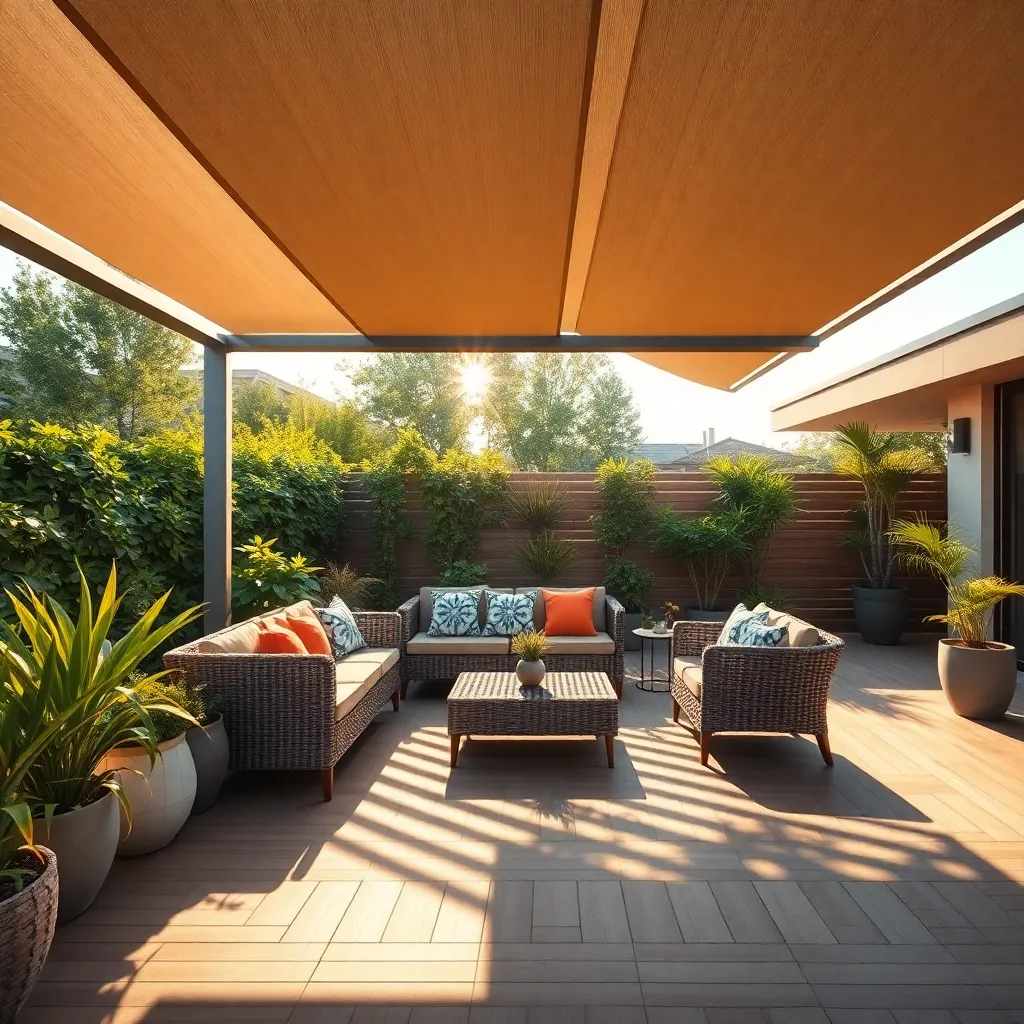
Designing a garden canopy with adjustable angles offers both flexibility and functionality, allowing you to adapt to changing sun positions and weather conditions. Consider using durable materials like aluminum or steel frames combined with UV-resistant fabric to ensure longevity. For beginners, start with a simple crank or pulley system to adjust the canopy angles, providing a straightforward way to manage shade and shelter.
Experienced DIY enthusiasts might explore motorized systems for a more sophisticated setup, integrating remote controls for ease of use. Ensure your design includes a stable base, such as concrete footings, to support the varying angles and prevent any wobbling. By incorporating these adjustable features, you can create a versatile outdoor space that remains comfortable throughout the day, no matter the season.
Select Vibrant Canopy Colors
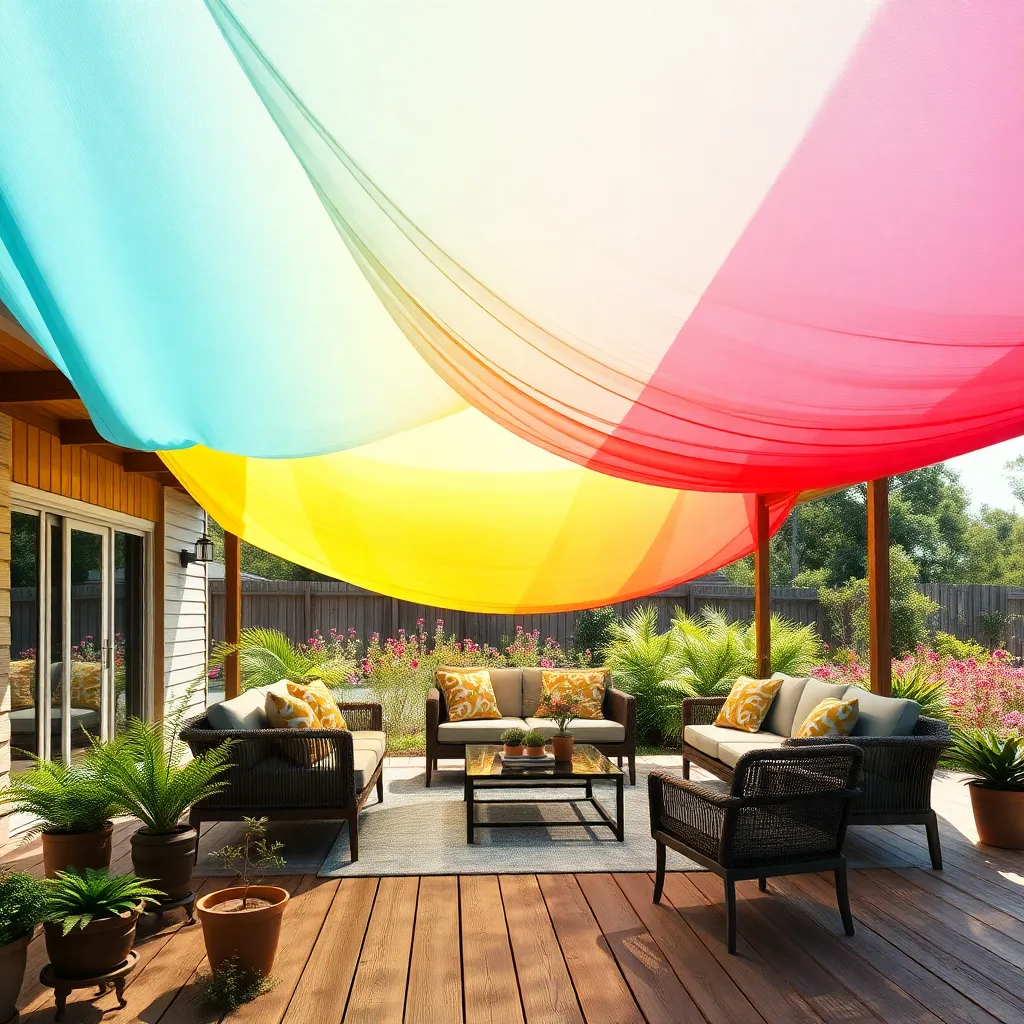
Choosing vibrant canopy colors can transform your garden into a lively and inviting space. Opt for hues that complement your garden’s natural palette, such as deep greens or warm earth tones, to create a harmonious look. If you prefer a bolder statement, consider bright yellows, reds, or blues that can stand out against the greenery. When selecting materials, weather-resistant fabrics like acrylic or polyester are ideal, offering durability and maintaining color vibrancy under the sun.
For those looking to add a touch of sophistication, consider integrating patterns or stripes into your canopy design. This can add depth and interest to a plain outdoor setup. Advanced gardeners might experiment with layering multiple shades by using dual-tone canopies, which allow for dynamic color interaction as the sun moves throughout the day. Remember to measure your space accurately, ensuring your canopy fits perfectly without overpowering the garden’s natural beauty. Incorporating these elements not only enhances the aesthetics but also provides a personalized touch to your outdoor retreat.
Opt for Minimalist Canopy Frames
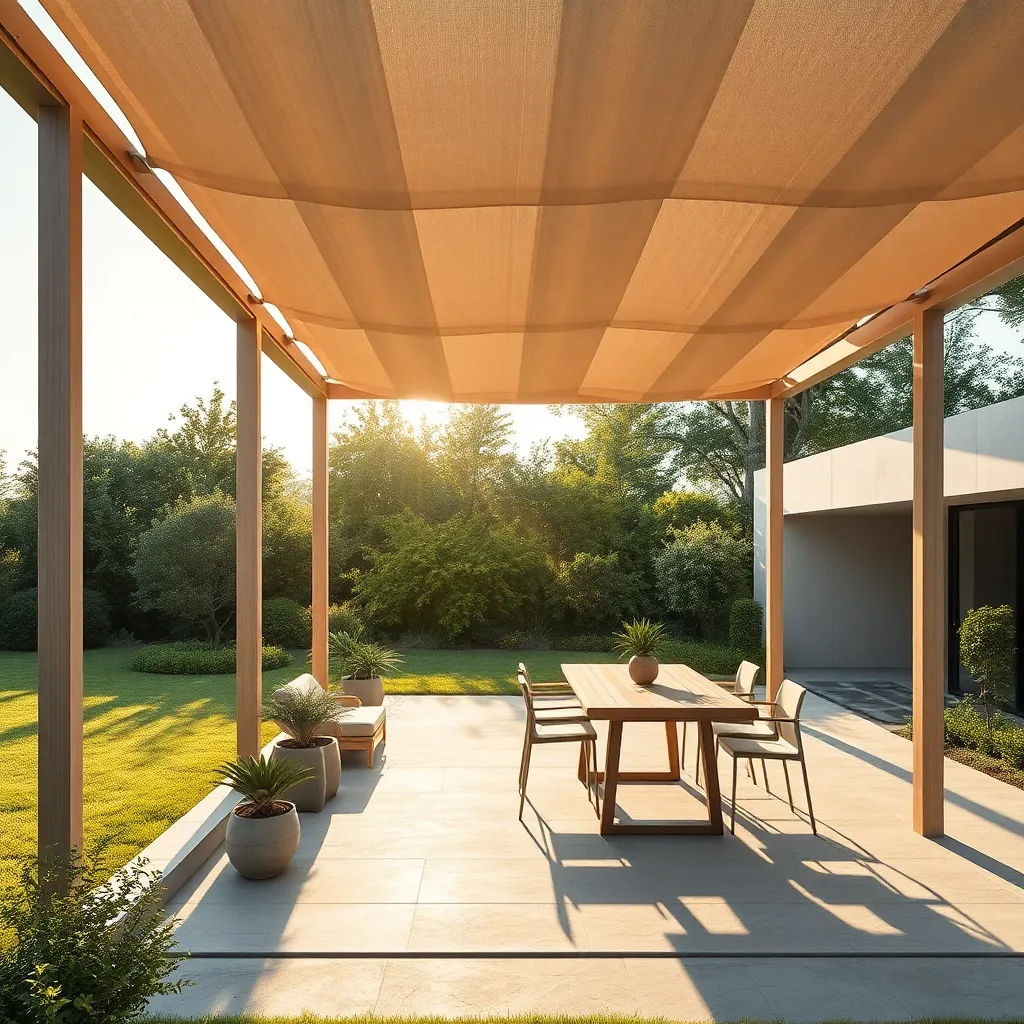
For those who appreciate simplicity, opting for minimalist canopy frames can transform your garden space with understated elegance. Choose materials like aluminum or powder-coated steel, which offer durability without the bulk. These frames not only provide a sleek look but also require less maintenance, making them ideal for busy homeowners. Consider a modular design that allows for easy assembly and disassembly, providing flexibility for seasonal changes or special events.
Incorporating minimalist design elements can maximize both style and functionality. Aim for clean lines and neutral colors to complement a variety of garden aesthetics. For a more advanced touch, integrate elements such as adjustable heights or removable panels to adapt to changing weather conditions. Pro Tip: Ensure the canopy fabric is UV-resistant and waterproof to extend its lifespan and enhance comfort in all conditions. By focusing on these details, you’ll achieve a minimalist setup that is both practical and visually appealing.
Integrate Built-In Seating Areas
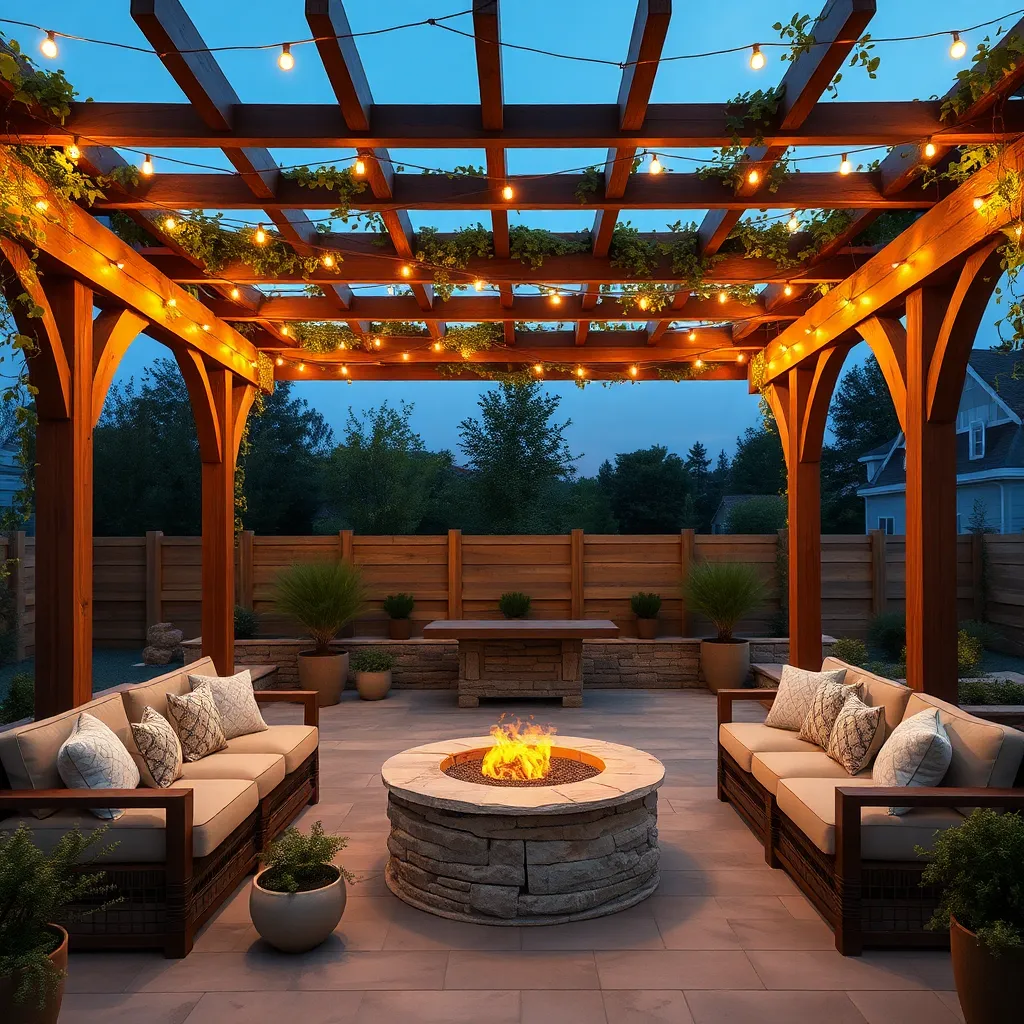
Integrating built-in seating areas under your garden canopy can transform your outdoor space into a cozy retreat. Consider using durable materials like pressure-treated wood, composite decking, or stone to ensure longevity and ease of maintenance. Begin with a simple design by incorporating bench seating along the edges of your canopy structure. For a more advanced approach, add storage under the seats to maximize functionality and keep your garden essentials neatly tucked away.
For a seamless look, match the seating materials with your canopy frame, creating a harmonious blend of textures. Ensure the seating height is comfortable—typically around 18 inches from the ground—while allowing for a seat depth of about 24 inches for optimal comfort. Enhance the area with weather-resistant cushions and pillows for added coziness. If you’re handy, consider incorporating built-in planters at the ends of the seating to bring greenery into your design, making the space even more inviting.
Utilize Waterproof Canopy Materials
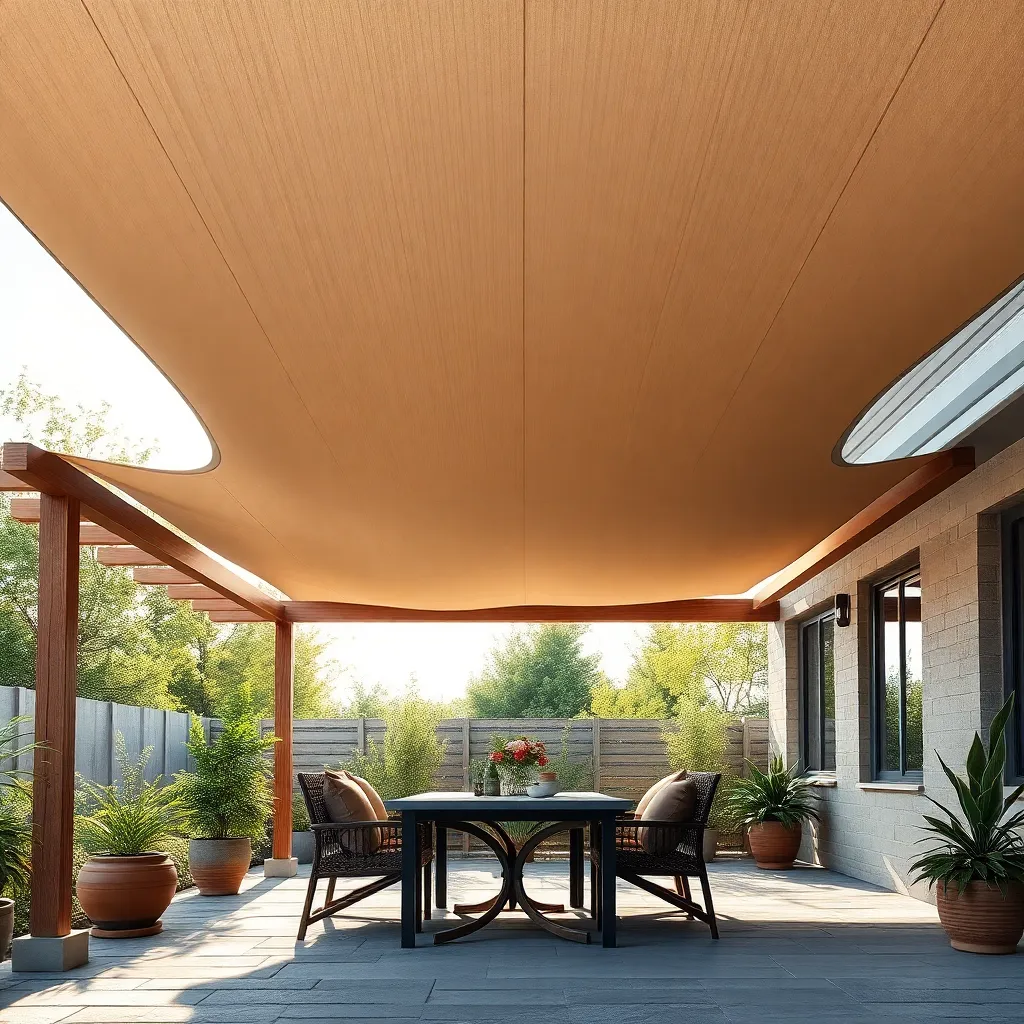
When building a garden canopy, choosing the right waterproof materials is essential to ensure durability and protection against the elements. Consider using materials like heavy-duty polyester or vinyl-coated fabrics, which are both water-resistant and UV-protective. These materials can be found in various colors and patterns, allowing you to personalize your canopy while ensuring it withstands rain and sun exposure.
For more advanced builders, integrating a tensioned canopy system can provide additional stability and weather resistance. Utilize galvanized steel or aluminum for the frame, as these metals offer superior rust resistance and longevity. Ensure that the canopy’s dimensions are slightly larger than the area you wish to cover, allowing for proper water runoff and preventing pooling. These techniques not only enhance the functionality of your garden canopy but also its aesthetic appeal, making your outdoor space inviting and comfortable.
Choose Modular Canopy Structures
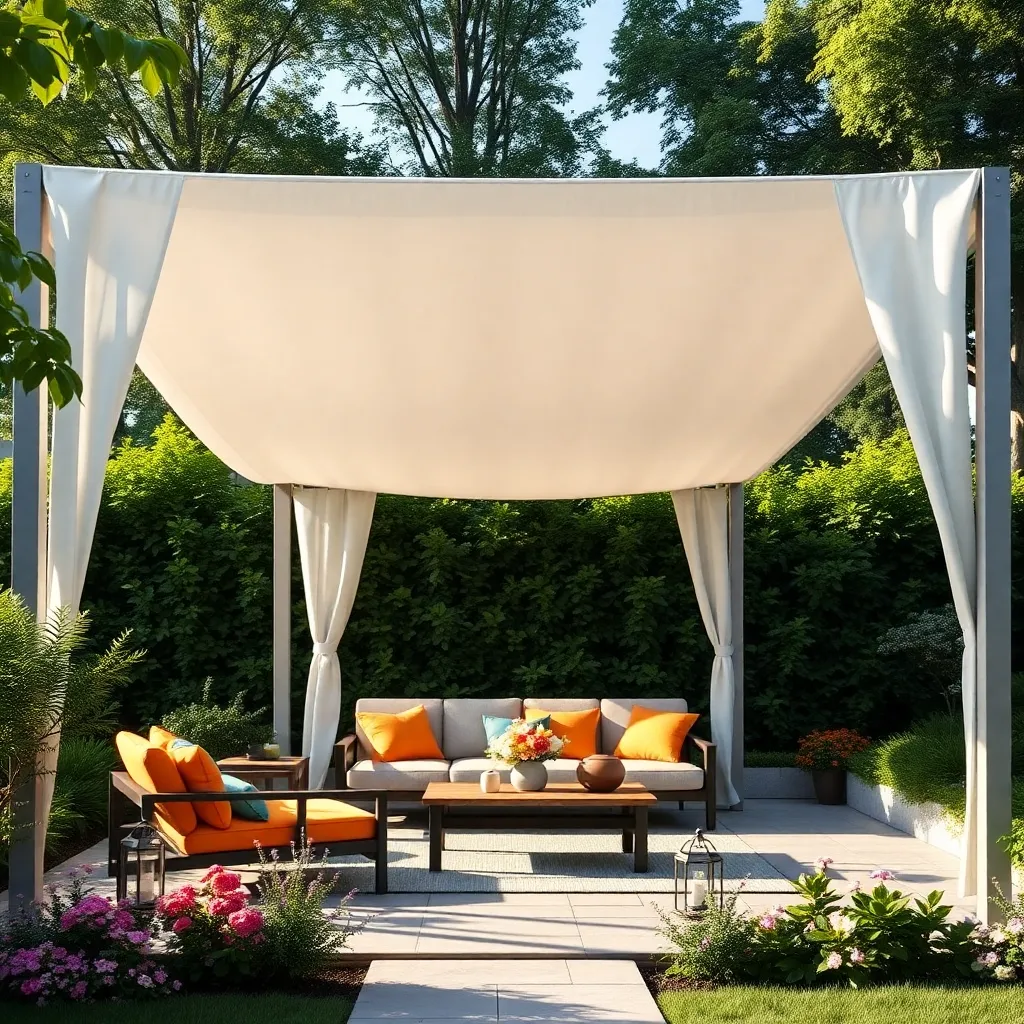
For a versatile and customizable outdoor space, consider investing in modular canopy structures. These structures offer the flexibility to adapt to changing needs, allowing you to expand or reconfigure the canopy as your garden evolves. Materials like powder-coated aluminum or stainless steel are recommended for their durability and resistance to weather conditions. You can choose from a variety of canopy fabrics, such as UV-resistant polyester, to ensure both comfort and protection from the elements.
Installation of modular canopies can be straightforward, making them an excellent choice for DIY enthusiasts. Start with a simple setup by choosing a basic frame, and gradually add panels or extensions as needed. For advanced customization, incorporate features like retractable awnings or built-in lighting to enhance functionality. This approach not only suits beginners looking for an easy project but also caters to experienced gardeners aiming to create a more sophisticated outdoor living area.
Enhance Privacy with Side Panels
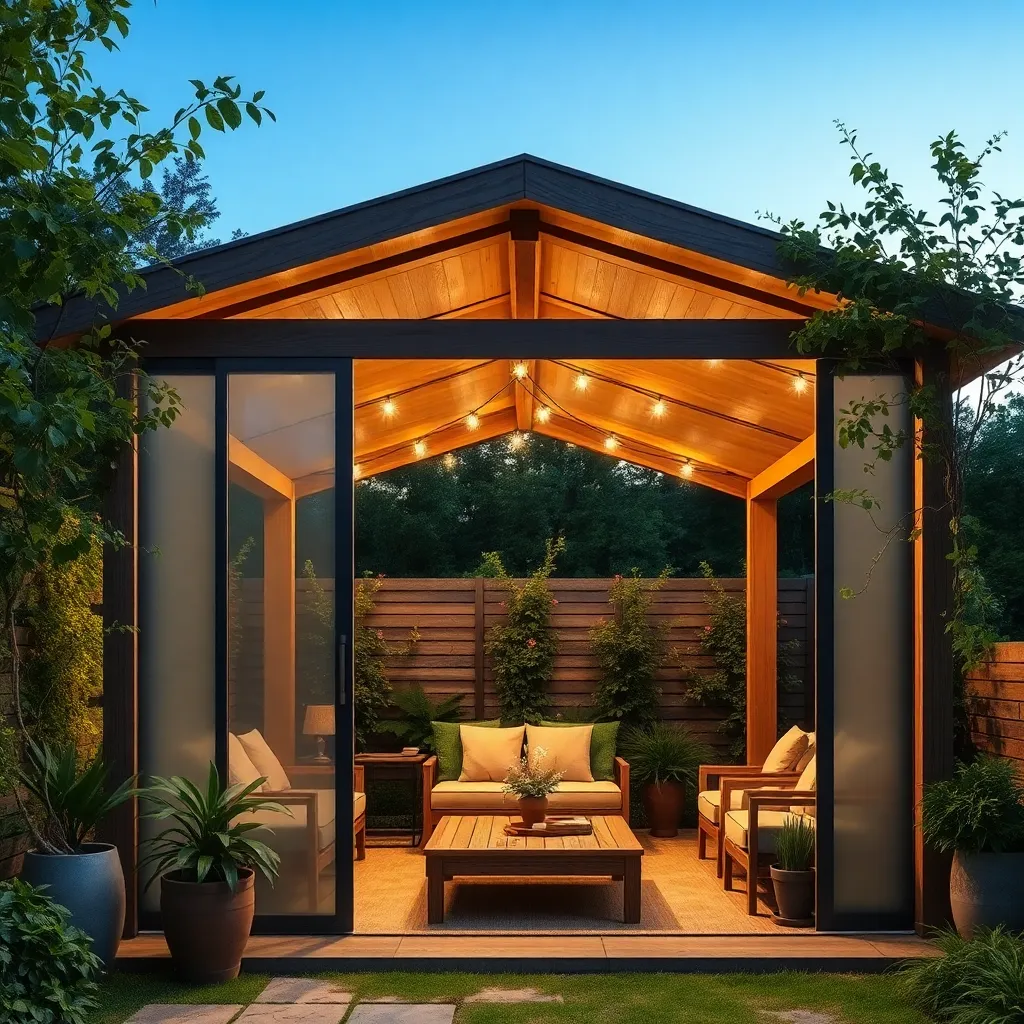
Transform your garden canopy into a private oasis by adding side panels. These panels not only provide shade but also enhance privacy, making your outdoor space feel more secluded. Consider using weather-resistant materials like canvas, bamboo, or UV-treated polyester to ensure durability and longevity. For a simple installation, attach panels using hooks or Velcro strips to the existing canopy frame. This allows for easy removal and adjustment based on the time of day or season.
For a more customized look, opt for side panels that incorporate design elements such as grommet curtains or roll-up screens. Choose panels with adjustable heights to adapt to different privacy needs or to block wind and sun effectively. If you’re feeling adventurous, consider adding a track system to slide panels open and closed smoothly. For a cohesive design, match the color and style of the side panels with your canopy to create a unified and stylish outdoor retreat. Whether you’re a beginner or a seasoned DIY enthusiast, these enhancements can elevate the functionality and comfort of your garden canopy.
Incorporate Canopy Heating Elements

To make your garden canopy a year-round haven, consider incorporating canopy heating elements. Start by selecting weather-resistant electric or gas-powered heaters that can be mounted directly to the canopy’s framework. Look for models with adjustable heat settings and safety features like automatic shut-off. When planning the layout, ensure heaters cover the seating area evenly without obstructing movement or aesthetics.
For beginners, a plug-and-play electric heater is a great starting point, offering ease of installation and use. If you’re more experienced, consider integrating a permanent gas heater with concealed gas lines for a sleek look. Always adhere to safety guidelines, such as maintaining a safe distance from flammable materials and ensuring adequate ventilation. By thoughtfully incorporating heating elements, you’ll extend the usability of your outdoor space into cooler months, creating a cozy retreat right in your backyard.
Select Eco-Friendly Canopy Materials
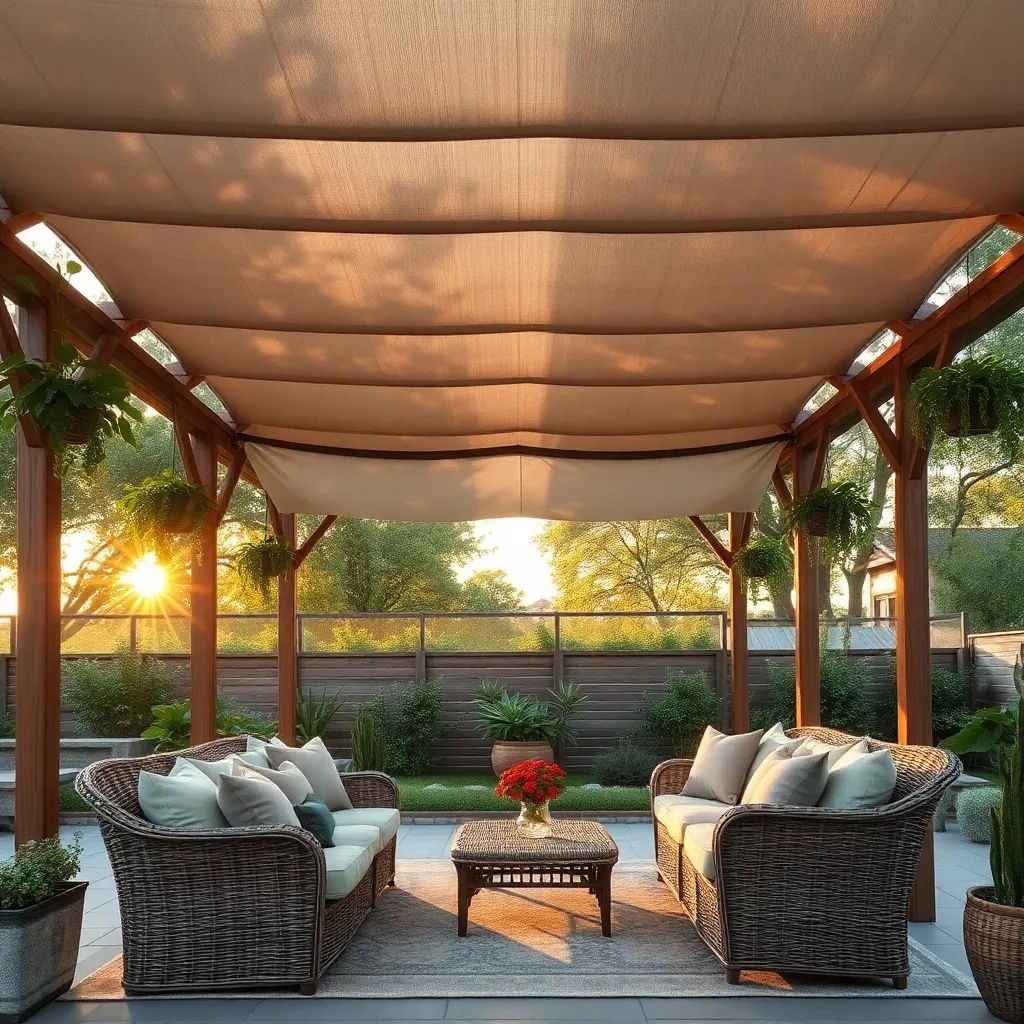
Opting for eco-friendly canopy materials not only benefits the environment but also enhances the aesthetic and durability of your garden space. Consider using **bamboo**, a sustainable and rapidly renewable resource, which offers a sturdy yet lightweight structure perfect for garden canopies. For a waterproof and UV-resistant option, explore **recycled polyester** fabrics or **canvas made from organic cotton**, which provide excellent shade while being kind to the planet. These materials are widely available and come in various colors and patterns, allowing you to customize your canopy to match your garden’s design.
Another great choice is **reclaimed wood**, which can add a rustic charm to your outdoor area while supporting sustainability. Ensure that your canopy design incorporates durable joinery techniques, such as **mortise and tenon joints**, to withstand weather conditions. For a more advanced touch, consider integrating **solar panels** into your canopy roof to harness renewable energy, providing an eco-friendly power source for outdoor lighting or heating elements. By choosing environmentally responsible materials and designs, you contribute to a healthier planet while creating a beautiful and functional outdoor retreat.
Conclusion: Creating Beautiful Outdoor Spaces
In exploring the ’14 Garden Canopy Ideas for Your Next Project,’ we’ve delved into transformative concepts that can enhance any relationship. From embracing open communication like a pergola’s open latticework to creating shared goals akin to a harmonious gazebo space, each idea underscores the importance of nurturing growth, fostering intimacy, and providing shelter through mutual support. Whether it’s the security of a retractable canopy representing adaptability or the elegance of a vine-wrapped arbor symbolizing intertwined goals, these metaphors offer profound insights into building lasting connections.
As your next step, choose one concept that resonates most with your relationship and commit to nurturing it this week. Perhaps it’s the delicate balance of sun and shade, mirroring the give-and-take necessary in any partnership. With every garden of love requiring ongoing care, let this be your invitation to cultivate your bond with intention and creativity.
Remember, relationships, much like gardens, flourish with regular attention and care. Bookmark this article to revisit these ideas whenever you need a dose of inspiration. As you plant these seeds of love and understanding, envision a future where your relationship blossoms with the strength and beauty of a well-tended garden. Your relationship’s success is just a thoughtful action away.
